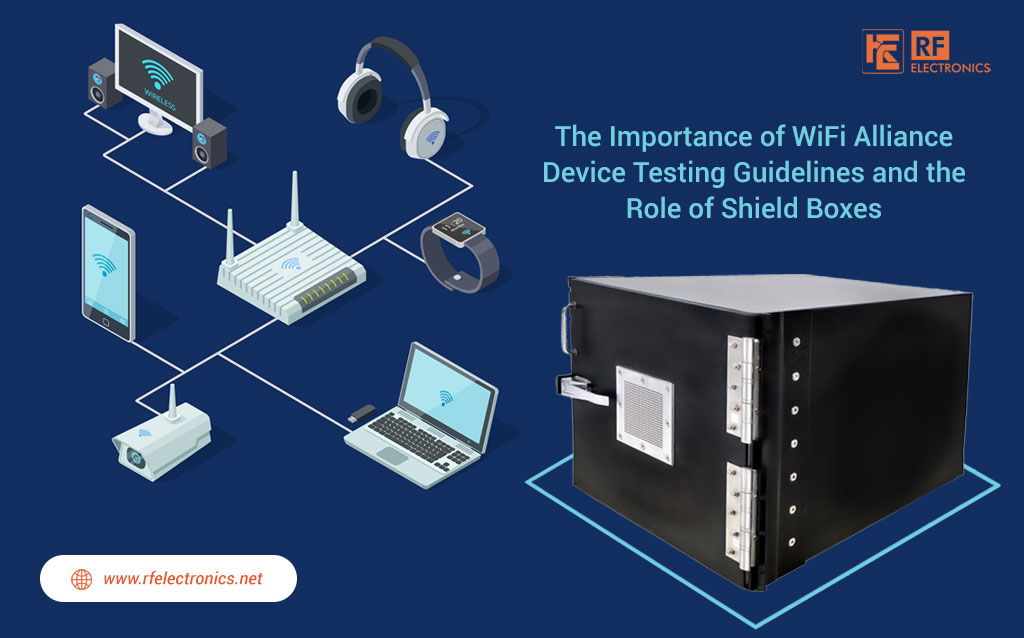
Introduction
In today's interconnected world, WiFi has become an essential part of our daily lives. Whether it's at home, in the office, or in public spaces, we rely on WiFi to stay connected and access information seamlessly. However, for
WiFi-enabled devices to work efficiently and reliably, they must undergo rigorous testing and adhere to industry standards. In this blog post, we will explore the significance of WiFi Alliance device testing guidelines and shed light on the use of shield boxes in ensuring optimal WiFi performance.
The WiFi Alliance Device Testing Guidelines
The WiFi Alliance, a global network of companies that promotes WiFi technology, plays a crucial role in ensuring interoperability, security, and performance of WiFi devices. To achieve this, they have developed comprehensive device testing guidelines that manufacturers must follow before bringing their products to market.
1. Interoperability: The WiFi Alliance tests devices to ensure they can connect and communicate seamlessly with other WiFi devices, regardless of the brand or model. This testing covers various WiFi standards, including the latest protocols such as 802.11ac and 802.11ax (also known as Wi-Fi 6 and Wi-Fi 6E).
2. Security: WiFi security is of paramount importance to protect users' data and privacy. The WiFi Alliance ensures that devices meet stringent security standards, such as WPA3 (WiFi Protected Access 3), which offers enhanced encryption and protection against common security vulnerabilities.
3. Performance: WiFi performance can significantly impact the user experience. The WiFi Alliance tests devices for factors like data transfer speeds, range, and reliability under different conditions. This testing ensures that devices meet the performance requirements set by the industry.
The Role of Shield Boxes in WiFi Testing
During WiFi testing, it is crucial to eliminate external interference that could affect the accuracy of the results. One effective way to achieve this is through the use of shield boxes, also known as anechoic chambers or Faraday cages. These specially designed enclosures provide a controlled environment by isolating the device under test (DUT) from external radio frequency (RF) signals, including WiFi, cellular, and other wireless transmissions.
1. Electromagnetic Isolation:
RF Shield boxes are constructed using conductive materials that block external RF signals from entering the enclosure. This isolation creates an environment where the device being tested can operate without interference, allowing accurate measurement of its WiFi performance.
2. Signal Containment: Shield boxes also prevent the DUT's WiFi signals from escaping and interfering with other devices nearby. This containment ensures that the testing process remains controlled and eliminates any external factors that could impact the results.
3. Regulatory Compliance: Many countries have strict regulations regarding electromagnetic interference (EMI) emitted by electronic devices. Shield boxes help manufacturers comply with these regulations by containing the RF signals within the enclosure, preventing them from interfering with other devices or causing potential harm.
Conclusion
WiFi Alliance device testing guidelines and the use of shield boxes are integral to ensuring that WiFi-enabled devices meet industry standards for interoperability, security, and performance. By adhering to these guidelines and conducting rigorous testing, manufacturers can deliver reliable and high-performing WiFi devices to consumers. Shield boxes provide a controlled testing environment by isolating the device under test from external RF signals, allowing accurate measurements and compliance with regulatory requirements.
As WiFi technology continues to evolve, it is essential for manufacturers to prioritize testing and compliance to deliver seamless connectivity experiences to users. The WiFi Alliance's device testing guidelines and the use of shield boxes serve as pillars in achieving this goal, ultimately benefiting consumers and driving the advancement of WiFi technology as a whole.


